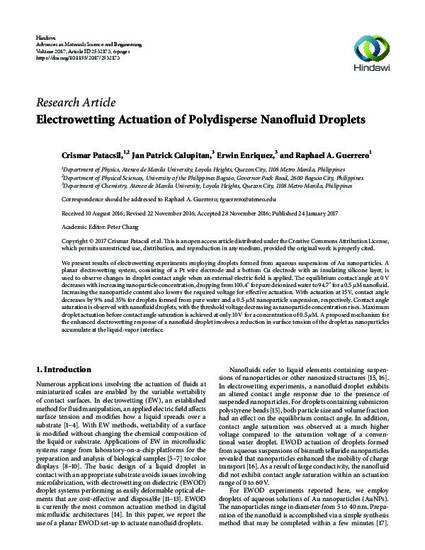
We present results of electrowetting experiments employing droplets formed from aqueous suspensions of Au nanoparticles. A planar electrowetting system, consisting of a Pt wire electrode and a bottom Cu electrode with an insulating silicone layer, is used to observe changes in droplet contact angle when an external electric field is applied. The equilibrium contact angle at 0 V decreases with increasing nanoparticle concentration, dropping from 100.4° for pure deionized water to 94.7° for a 0.5 μM nanofluid. Increasing the nanoparticle content also lowers the required voltage for effective actuation. With actuation at 15 V, contact angle decreases by 9% and 35% for droplets formed from pure water and a 0.5 μM nanoparticle suspension, respectively. Contact angle saturation is observed with nanofluid droplets, with the threshold voltage decreasing as nanoparticle concentration rises. Maximum droplet actuation before contact angle saturation is achieved at only 10 V for a concentration of 0.5 μM. A proposed mechanism for the enhanced electrowetting response of a nanofluid droplet involves a reduction in surface tension of the droplet as nanoparticles accumulate at the liquid-vapor interface.
